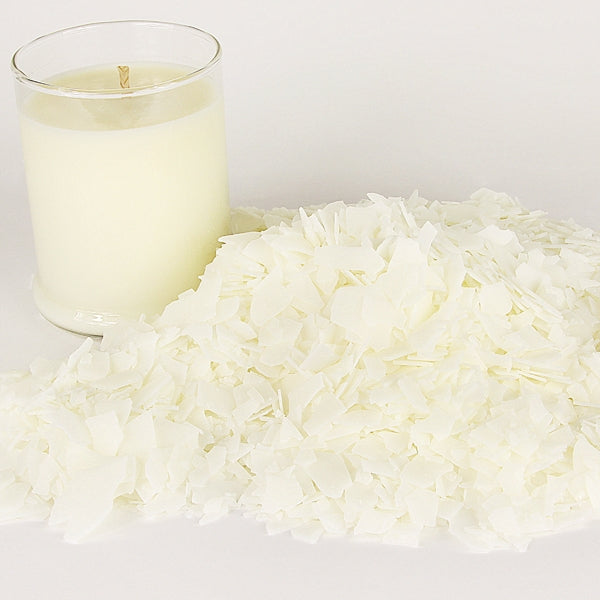Transform Your Home with Eco-Friendly Soy Candles and Home Fragrance
Transform Your Home with Eco-Friendly Soy Candles and Home Fragrance
Blog Article
From Wick to Wax: Comprehending the Chemistry Behind Soy Wax Candles and Their Environmental Influence
As we illuminate our areas with the cozy radiance of candle lights, there lies a realm of complex chemistry behind the relatively basic act of lighting a soy wax candle light. Join us as we unravel the scientific ins and outs behind soy wax candle lights and discover their implications on our atmosphere.
Soy Wax Vs. Paraffin Wax
When comparing soy wax and paraffin wax for candle light production, it is vital to comprehend the unique attributes and advantages of each product. Soy wax is an all-natural, eco-friendly source derived from soybean oil, making it green and eco-friendly - soy candles. In contrast, paraffin wax is a by-product of petroleum refining, which increases issues regarding its environmental effect and sustainability
Soy wax candles shed cleaner and release much less soot compared to paraffin wax candles, making them a much healthier selection for interior air high quality. Furthermore, soy wax has a lower melting factor, permitting a longer-lasting candle light that distributes fragrance more effectively. Paraffin wax, on the other hand, tends to melt faster and much less easily, potentially releasing damaging chemicals right into the air.
From a sustainability viewpoint, soy wax is preferred for its biodegradability and sustainable sourcing, lining up with the growing customer choice for ecologically conscious items. While paraffin wax has actually been a standard option in candle making as a result of its price and simplicity of use, the change in the direction of environment-friendly options like soy wax is getting momentum in the sector.
Chemical Structure of Soy Wax

Combustion Process in Soy Candles
The chemical composition of soy wax directly influences the combustion process in soy candles, affecting elements such as shed time, fragrance release, and environmental influence. When a soy candle light is lit, the heat from the fire melts the wax near the wick. This liquid wax is after that attracted up the wick as a result of capillary activity. As the liquid wax gets to the fire, it evaporates and goes through combustion. The combustion procedure entails the vaporized hydrocarbons in the wax reacting with oxygen airborne to create warm, light, water vapor, and carbon dioxide.
The burning effectiveness of soy candle lights is influenced by the purity of the soy wax and the top quality of the wick. Additionally, soy wax candles have a reduced ecological effect contrasted to paraffin candle lights due to their biodegradable and sustainable nature.

Environmental Advantages of Soy Wax

Thought about a lasting choice to typical paraffin wax, soy wax supplies remarkable ecological advantages that make it a prominent option among eco-conscious consumers. One substantial benefit of soy wax is its eco-friendly sourcing. Soy wax is stemmed from soybean oil, which is mainly cultivated in the USA. The farming of soybeans aids sustain regional farmers and reduces the dependence on non-renewable nonrenewable fuel sources utilized in paraffin wax production. Additionally, soy wax is naturally degradable, indicating it breaks down naturally without launching dangerous toxins into the setting. This characteristic makes soy wax candles an extra eco-friendly alternative compared to paraffin wax candle lights, which are made from oil, a non-renewable source. In addition, soy wax burns cleaner and generates less residue than paraffin wax, contributing to better indoor air quality and lowering the demand for cleaning and maintenance. In general, the ecological benefits go to the website of soy wax straighten with the growing demand for environmentally friendly and lasting products in the market.
Recycling and Disposal Considerations
Reusing and correct disposal of soy wax candles play a vital function in preserving environmental sustainability and decreasing waste in households and communities. When it comes to reusing soy wax candle lights, the initial action is to make certain that the candle light has burned totally.

In terms of disposal, if recycling is not a choice, soy wax candles are eco-friendly and can be securely thrown away in the majority of house waste systems. Nonetheless, it is constantly recommended to get in touch with neighborhood reusing centers or waste management solutions for certain standards on candle disposal to guarantee proper handling and environmental management.
Verdict
To conclude, the chemistry behind soy wax candle lights reveals their ecological advantages over paraffin wax candle lights. Soy wax, obtained from soybean oil, burns cleaner and generates less residue when compared to paraffin wax. The burning process in soy candle lights is much more reliable, causing a much longer and much more also burn. In addition, soy wax is renewable and eco-friendly, making it a more sustainable selection for candle production. Reusing and proper disposal of soy wax candle lights better contribute to their ecological influence.
When contrasting soy wax and paraffin wax for candle light making, it is crucial to understand the unique features and benefits of each material (candles).Soy wax candles burn cleaner and release much less residue contrasted to paraffin wax candles, making them a healthier option for indoor air high quality.Taken into consideration a sustainable choice to conventional paraffin wax, soy wax uses remarkable ecological advantages that make it a preferred choice among eco-conscious consumers. Soy More Bonuses wax burns cleaner and produces less soot than paraffin wax, adding to better indoor air high quality and decreasing the demand for cleaning and upkeep.In final thought, the chemistry behind soy wax candle lights discloses their environmental advantages over paraffin wax candle lights
Report this page